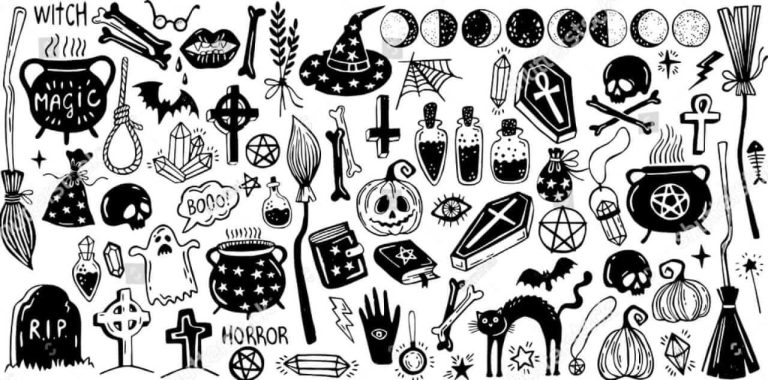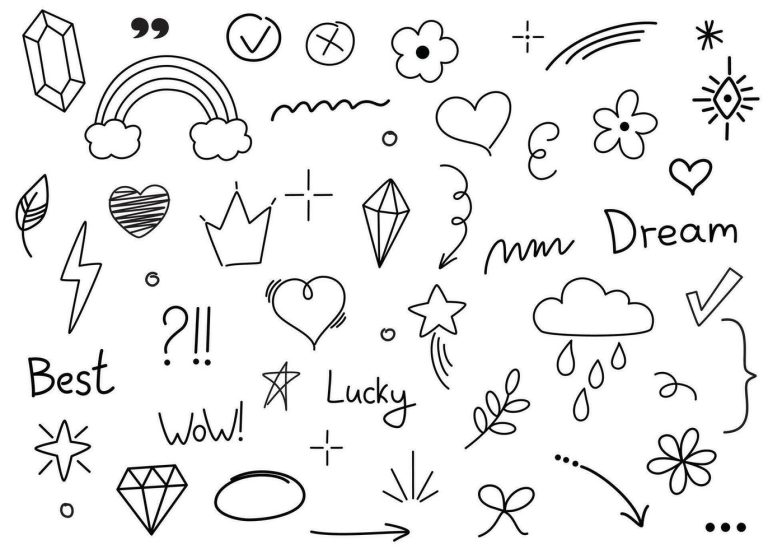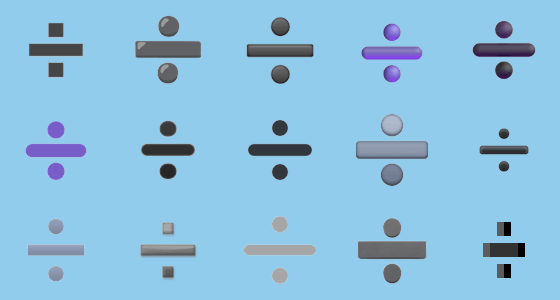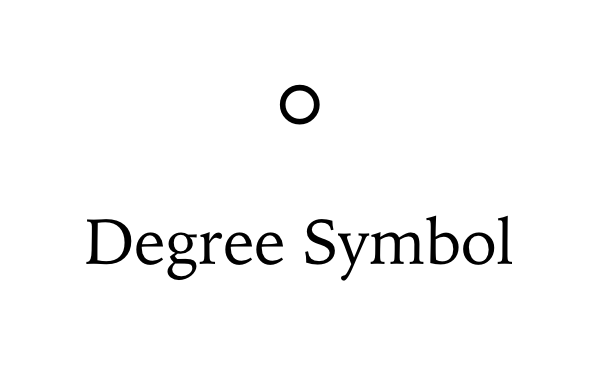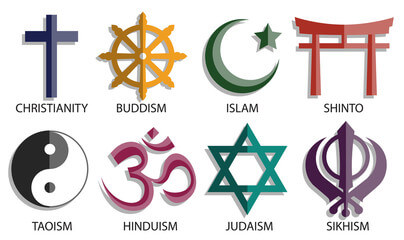
Searching for powerful true religion symbols to copy and paste? You’re in the right place. This guide brings you a meaningful collection of sacred symbols from the world’s major religions—Christianity, Islam, Hinduism, Buddhism, Judaism, and more. Whether you’re exploring spirituality, enhancing your content, or simply curious about ancient signs of faith, this page offers easy access to religious symbols rich in history and belief.
From the ✝️ Cross to the ☪️ Crescent, from the 🕉️ Om to the ✡️ Star of David—each symbol carries deep meaning rooted in centuries of tradition. We’ve organized everything for quick copy-paste, making it easy for you to use in bios, captions, projects, or posts. Tap into the sacred and share symbols of truth, peace, and divine connection with just a click.

True Religion Symbol Copy and Paste
True religion symbols are powerful visual icons that represent the core beliefs, values, and sacred truths of the world’s major faiths. These symbols—like the ✝️ Christian Cross, ☪️ Islamic Crescent, 🕉️ Om, and ✡️ Star of David—are not just decorative characters. They carry deep spiritual meaning and are rooted in centuries of religious tradition, scripture, and ritual.
Symbols play a vital role in expressing faith, devotion, and identity. For believers, these icons provide a sense of connection to the divine, helping translate complex spiritual concepts into simple, recognizable visuals. They are often used in prayer, meditation, worship, religious texts, artwork, and even personal expression through jewelry or digital communication. Across cultures, they act as a universal language of belief, unity, and divine purpose.
This blog post brings you a curated collection of true religion symbols you can easily copy and paste. Whether you’re creating religious content, updating your bio, designing art, or simply exploring spirituality, this guide gives you quick access to sacred symbols along with their meanings, Unicode, and HTML codes. No need to search or decode—just copy, paste, and express your faith.
Let’s explore the universal language of faith—one symbol at a time.
What Are True Religion Symbols?
Definition and Context
True religion symbols are sacred visual representations used across spiritual, religious, and philosophical traditions to communicate divine truths, values, and cosmic principles. These symbols act as a bridge between the physical and spiritual realms—offering believers a way to express devotion, recognize sacred teachings, and connect with higher powers. Whether it’s the ✝️ Cross in Christianity, the 🕉️ Om in Hinduism, or the ☸️ Dharma Wheel in Buddhism, each icon holds deep meaning within its faith tradition.
Historical Significance and Cross-Cultural Relevance
Throughout history, religious symbols have served as powerful tools for spiritual identity, cultural preservation, and social unity. From ancient temples and sacred texts to modern art and media, these icons have been carved into stone, painted on walls, etched in manuscripts, and now—shared digitally. Despite vast geographical and theological differences, similar symbolic themes emerge across religions: light, balance, unity, divinity, and eternal life. This cross-cultural consistency reflects the shared human quest for meaning and moral guidance.
Uniting Belief Systems and Inspiring Faith
While each religion may have its own unique symbols, many reflect universal truths—love, compassion, justice, peace, and spiritual awakening. These visual signs transcend language and time, offering a common ground for interfaith dialogue and mutual respect. By understanding and using these symbols thoughtfully, people from all walks of life can foster deeper spiritual awareness, appreciation for world religions, and a sense of belonging to something greater than themselves.
Popular True Religion Symbols
Explore some of the most widely recognized true religion symbols from major spiritual traditions around the world. Each symbol below represents sacred meaning, divine truth, and cultural heritage.
✝️ Christian Cross
The Cross is the most recognized symbol in Christianity. It represents the crucifixion of Jesus Christ and the belief in salvation, forgiveness, and eternal life through his sacrifice. It’s a powerful emblem of faith, redemption, and the love of God.
☪️ Islamic Crescent
The Crescent Moon and Star is a symbol often associated with Islam. While not rooted in the Quran, it symbolizes the unity of the Islamic world, the guidance of Allah, and the lunar-based Islamic calendar. It’s widely seen on mosques, flags, and spiritual texts.
🕉️ Om (Hinduism)
Om is a sacred sound and spiritual icon in Hinduism. It represents the essence of the ultimate reality, consciousness, or Atman (soul). Chanting Om is believed to align the mind, body, and spirit with universal energy and divine vibration.
✡️ Star of David (Judaism)
The Star of David, or “Magen David,” is a six-pointed star that symbolizes divine protection and Jewish identity. It has become a global emblem of Judaism and often appears on synagogues, the Israeli flag, and ceremonial items.
☸️ Dharma Wheel (Buddhism)
Known as the Dharmachakra, the Dharma Wheel represents the path to enlightenment, the teachings of the Buddha, and the Eightfold Path. Each spoke of the wheel symbolizes a core aspect of Buddhist practice and wisdom.
🔯 Hexagram (Mystical Traditions)
The Hexagram, often linked to Kabbalah and other mystical systems, signifies the union of opposites—heaven and earth, spirit and matter. It’s a symbol of cosmic balance, spiritual protection, and metaphysical insight.
☦️ Orthodox Cross
The Orthodox Cross is distinct in design, with three crossbars. It’s used primarily in Eastern Orthodox Christianity and symbolizes Christ’s crucifixion, divine judgment, and the resurrection. Each line has its own theological significance.
ॐ Sanskrit Om (Spiritual Sound)
This is the classical Sanskrit version of the Om symbol, used in Hinduism, Jainism, and Buddhism. It’s considered the primordial sound from which the universe was created. It embodies the absolute, the source, and the spiritual heartbeat of existence.
How to Use These Symbols (Creative Ideas)
True religion symbols are more than spiritual icons—they’re tools of expression, connection, and design. Here are some creative ways to incorporate these sacred symbols into your daily life and digital content:
🖋️ Social Media Bios and Posts
Add ✝️, ☪️, 🕉️, or ✡️ to your Instagram, TikTok, Twitter, or WhatsApp bio to express your beliefs subtly and meaningfully. These symbols make your profile stand out and reflect your personal or spiritual identity.
🎨 Spiritual Artwork and Graphic Design
Use symbols like the ☸️ Dharma Wheel or 🔯 Hexagram in posters, tattoos, mandalas, logos, or digital art. They add depth, mysticism, and meaning to visual content, whether for professional design or personal projects.
📚 Religious Education and Study Material
Teachers, students, and content creators can embed these symbols in presentations, workbooks, or websites to visually represent each religion during lessons or spiritual discussions.
🙏 Meditation and Prayer Tools
Symbols such as Om (🕉️ or ॐ) are widely used in meditation spaces, altars, or journals. You can include them in guided meditations, prayer routines, or even on vision boards to enhance spiritual focus.
💌 Messages, E-Cards, and Invitations
When designing wedding invites, religious event flyers, or spiritual greetings, these symbols add elegance and authenticity. A ✡️ for a Bar Mitzvah, a ✝️ for a baptism, or a ☪️ for Eid cards can bring meaning to every design.
🌐 Websites, Blogs, and Emails
Enhance your spiritual or faith-based blog by embedding symbols with proper HTML codes. They support both aesthetic and thematic consistency and help visually engage readers.
👕 Clothing and Merch
Design your own faith-inspired t-shirts, hoodies, or mugs using Unicode symbols. Many brands and personal creators use these icons to make bold, stylish statements rooted in belief.
Unicode & HTML Code for True Religion Symbols
Below is a handy reference table of the most popular true religion symbols along with their Unicode points and HTML entity codes. You can use these in HTML documents, CSS styles, and digital platforms that support Unicode encoding.
| Symbol | Name | Unicode | HTML Code |
|---|---|---|---|
| ✝️ | Christian Cross | U+271D |
✝ or ✗ |
| ☪️ | Islamic Crescent | U+262A |
☪ |
| 🕉️ | Om | U+1F549 |
🕉 |
| ✡️ | Star of David | U+2721 |
✡ |
| ☸️ | Dharma Wheel | U+2638 |
☸ |
| 🔯 | Hexagram | U+1F52F |
🔯 |
| ☦️ | Orthodox Cross | U+2626 |
☦ |
| ॐ | Sanskrit Om | U+0950 |
ॐ |
How to Use These:
-
In HTML: Paste the HTML code directly into your webpage code.
-
In Word or Documents: Use the Unicode or copy the symbol directly.
-
In CSS: Use Unicode like
content: "\271D";inside a::beforeor::afterselector.
Related Spiritual Symbols You Might Like
If you find beauty and meaning in true religion symbols, you’ll likely appreciate these related icons that also hold deep spiritual, philosophical, or mystical significance. They’re perfect for enhancing digital content, meditation practices, or symbolic expression.
☮️ Peace Symbol
Universally recognized as a call for harmony and nonviolence, the peace symbol represents the essence of many faiths—love, unity, and compassion.
☯️ Yin Yang (Taoism)
Symbolizing balance between opposing forces—light and dark, male and female, spiritual and physical—the Yin Yang reflects Taoist beliefs and resonates with many seeking inner harmony.
🪷 Lotus Flower (Hinduism & Buddhism)
The lotus is a powerful symbol of spiritual awakening, purity, and transcendence. It represents rising above worldly struggles to reach enlightenment.
∞ Infinity Symbol
Though mathematical in form, the infinity sign is often used in spiritual contexts to symbolize eternal life, divine continuity, and limitless love.
👼 Angel & Celestial Symbols
Angels (👼), stars (🌟), and sparkles (✨) are popular in Christianity and New Age practices. They signify protection, divine light, and spiritual presence.
🛐 Place of Worship
This emoji shows respect for all places of prayer—mosques, churches, temples—and reminds us of the diversity and unity in global faith systems.
🧘 Meditative Person
While not a traditional religious symbol, the person meditating emoji is often used to reflect mindfulness, inner peace, and spiritual practice across cultures.
FAQs
Q1: Can I use true religion symbols on social media or blogs?
Yes, you can freely use these symbols across platforms like Instagram, TikTok, Facebook, blogs, and websites. They are part of the Unicode standard, making them safe and accessible for digital communication—whether for personal use or public content.
Q2: Are true religion symbols sacred or just decorative?
Many of these symbols—like ✝️, ☪️, 🕉️, and ☸️—are deeply sacred in their respective religions. While they can be used decoratively, it’s important to show respect for their spiritual and cultural meanings, especially when using them in public or artistic content.
Q3: Are there copyright issues with using religious symbols?
No. Most true religion symbols are in the public domain as part of global religious heritage. Since they are encoded in Unicode, there are no copyright restrictions on copying or using them. However, be cautious with branded designs or stylized versions.
Q4: Why do different religions use similar shapes or icons?
Many faiths use similar visual themes—like circles, stars, and crosses—because they reflect universal spiritual concepts such as unity, eternity, or balance. This cross-symbolism shows how human spirituality often converges across cultures and histories.
Q5: Can I use these symbols in professional or educational material?
Absolutely. These symbols are ideal for religious education, interfaith presentations, classroom teaching, and spiritual content creation. They add visual clarity and promote cross-cultural understanding.
Q6: Are these symbols supported on all devices and platforms?
Most modern devices, browsers, and apps fully support Unicode symbols. However, visual appearance may slightly vary between operating systems (like iOS, Android, or Windows). Older platforms may not display every symbol perfectly.
Conclusion
True religion symbols offer more than just aesthetic value—they embody centuries of spiritual wisdom, cultural identity, and divine truth. Whether it’s the ✝️ Christian Cross symbolizing salvation, the ☪️ Islamic Crescent representing guidance, or the 🕉️ Om echoing the sound of the universe, these icons transcend borders and connect hearts across the world.
This post has given you easy access to powerful religious symbols with their meanings, codes, and creative uses. Whether you’re posting on social media, creating digital art, building educational content, or simply exploring your spiritual journey, these symbols are ready to inspire.
Bookmark This Page and Explore More
Keep this resource handy for whenever you need to copy and paste a spiritual icon. And don’t stop here—explore related symbol guides to deepen your understanding of faith, philosophy, and culture.

